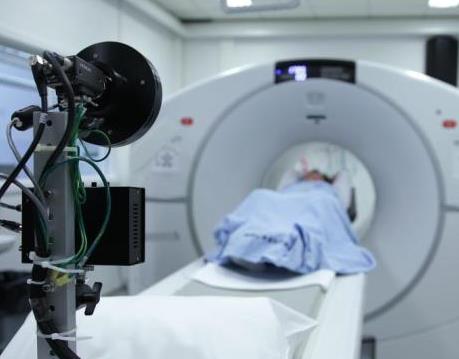AI Was Not Designed for Pediatric Patients: What Does That Mean for Them?

As radiologists and medical imaging professionals, we know that pediatric patients are different from adult patients. Not only do they have different physiology, including higher cardiac output, their anatomy changes with maturity. Many age-specific differential diagnoses in pediatric patients, such as pyloric stenosis and ileocolic intussusception as causes of vomiting, are not seen in adults. Pediatric patients also have a heightened sensitivity to radiation because they have longer to manifest the potentially adverse consequences of radiation. Since many younger kids can’t remain still for MRI without sedation, we also perform ultrasound on children more often.
For all of these reasons, we treat children differently than adults in medical imaging. But, while AI use in medical imaging is expanding, pediatric patients are left out of most of the AI solutions used in clinical practice today. That means AI use exclusively in adults could inadvertently result in pediatric patient harm.
It’s time for us to begin addressing the way AI impacts pediatric patients. Recently the ACR Informatics Commission established a Pediatric AI Workgroup charged with tackling this important health equity issue. The committee is working with ACR DSI and has established a campaign called “Image IntelliGently” (trademark pending) to ensure access to clinically useful AI for pediatric patients and to ensure pediatric patient safety whenever AI that was designed for adults is used in imaging.
What are the biggest issues surrounding pediatric patients and imaging AI?
Pediatric patients lack access to AI
Although using AI for bone age studies was one of the first uses reported in radiology, today even bone age AI is not commercially available for pediatric patients. Of the 193 FDA cleared tools listed in the ACR DSI catalog as of July 2022, only six, or 3%, have been cleared for pediatric use, and these AI tools are for use in image processing/quantification.
There are no AI tools for triage (CADt), detection (CADe), or diagnosis (CADx) that have been cleared for pediatric use. This is significant because the AI that works to triage studies with critical findings, like intracranial hemorrhage (ICH) for priority reads or to detect findings such as pulmonary nodules, is not designed to work on pediatric patients.
Adult AI might not be safe to use on pediatric patients
The impact on pediatric patient safety of an ecosystem where the imaging AI has been developed for adult use is not yet clear. To date, there have not been any studies to indicate that AI developed for adults performs at the same level on the pediatric patient population. There are some anecdotes of AI triage algorithms deployed in mixed adult/pediatric settings where we’re told the AI ran exclusively on the adult patients. In at least a couple instances, the lack of an AI-positive finding flag was assumed to mean the AI was run and was not abnormal, when in fact, the AI had not been run on pediatric patients. There have been no publications addressing pediatric patient safety in practices where AI developed for adults was deployed across all patients when the practice also cares for pediatric patients.
What can radiologists do?
If you’re using AI on adults in your practice, but not pediatric patients, address its impact on pediatric patients. For example:
1. Ask if radiologists and technologists are aware that most AI hasn’t been designed for pediatric patients. If not, communication is probably needed to ensure that AI-related conclusions are not being made about the entire patient population.
2. Check to see if turnaround times on pediatric patients’ studies are being impacted if triage is used only in adults.
3. If you’re using AI to shorten MRI sequences, make sure that it works as well in pediatric patients as it does in adults.
If you’re using AI in pediatric patients, share your experience. For example, some things it would be extremely helpful to know include:
1. Which AI tools are you using for pediatric patients?
2. Does the AI work well across all pediatric ages or are there differences for subset groups? For example, does the AI work well in teenagers, but not in infants?
3. Are there extra steps you are taking to make sure AI continues working as well in pediatric patients as it does in your adult patients?
If you want to help, but aren’t yet using AI, educate and advocate for pediatric imaging AI. Some of the items the ACR Pediatric AI Workgroup is advocating for are:
1. Consistent inclusion of pediatric applicability labeling on FDA clearance documents. This would be much like the “nutritional label” style, but for AI devices, to allow users consistent access to the data on the patient population used when developing and testing the AI tools, including the age of patients.
2. Be open to the need for incentives to promote the development of pediatric AI. This could take the form of additional funding for research studies or resources within the FDA for clearance.
3. Support prioritization of pediatric radiology AI anytime you have the opportunity to influence development. It’s needed ASAP, just to catch up!
Take home points
We know that pediatric patients still aren’t just little adult patients, and must keep in mind that the AI developed for adults has not been shown to work as well across the pediatric patient population as in adults. None of the FDA cleared triage (CADt), detection (CADe), or diagnosis (CADx) tools are intended for use in pediatric patients, and that puts pediatric patients are at a disadvantage. To Image IntelliGently, everyone is needed, not just pediatric radiologists! If you want to get involved, consider the recommendations above, or contact Paige Nierengarten for additional information on the Pediatric AI Workgroup.
Marla Sammer, MD, MHA, FAAP | Chair, Pediatric AI Workgroup, American College of Radiology, Informatics Commission |Vice-Chair, Clinical Affairs, Texas Children’s Department of Radiology| Associate Professor, Baylor College of Medicine
AI Was Not Designed for Pediatric Patients: What Does That Mean for Them?
-

You may also like
A Patient's Perspective on AIApril 12, 2021 | David AndrewsAs radiologists, we strive to deliver high-quality images for interpretation while maintaining patient safety, and to deliver accurate, concise reports that will inform patient care. We have improved image quality with advances in technology and attention to optimizing protocols. We have made a stronger commitment to patient safety, comfort, and satisfaction with research, communication, and education about contrast and radiation issues. But when it comes to radiology reports, little has changed over the past century.